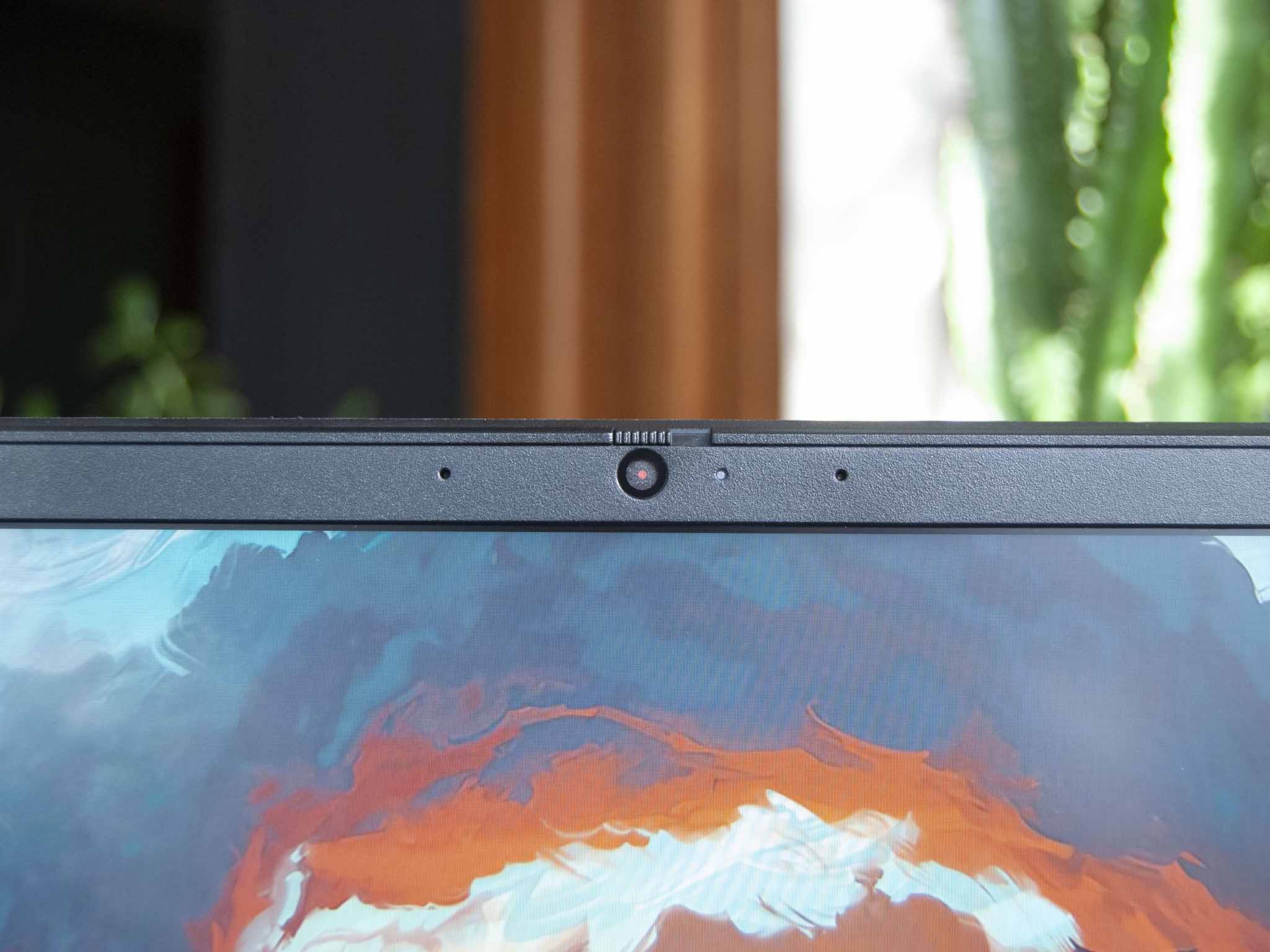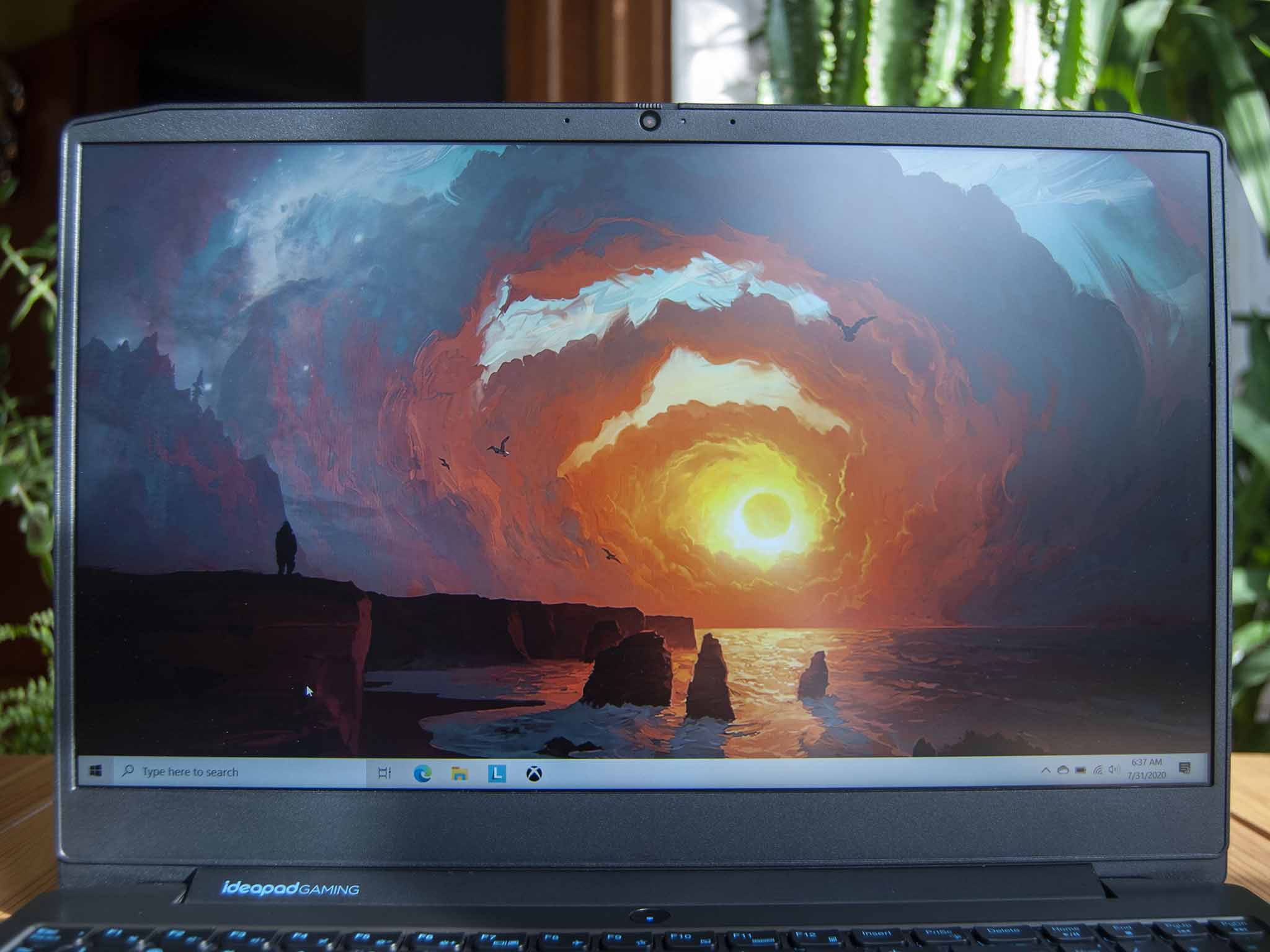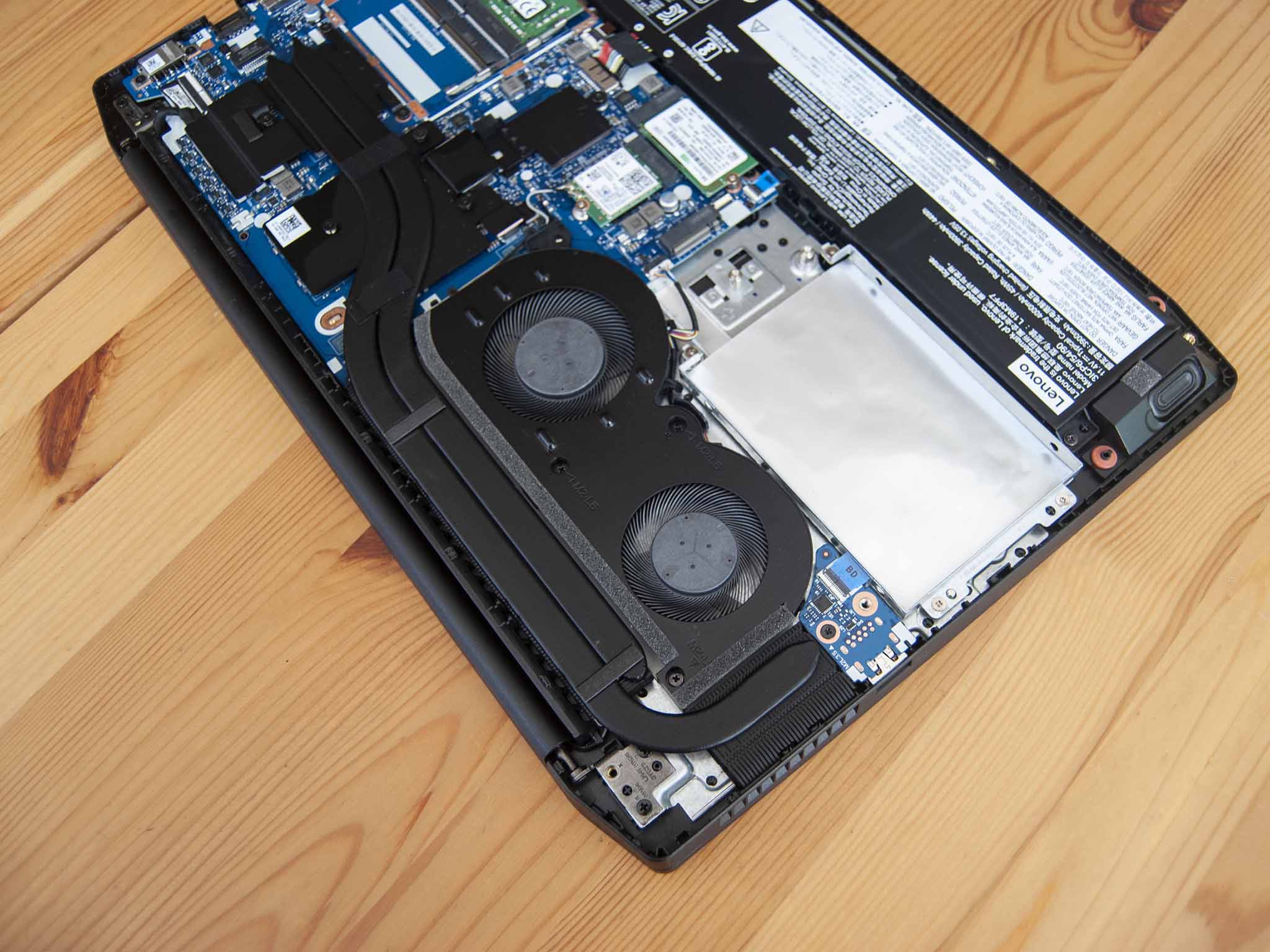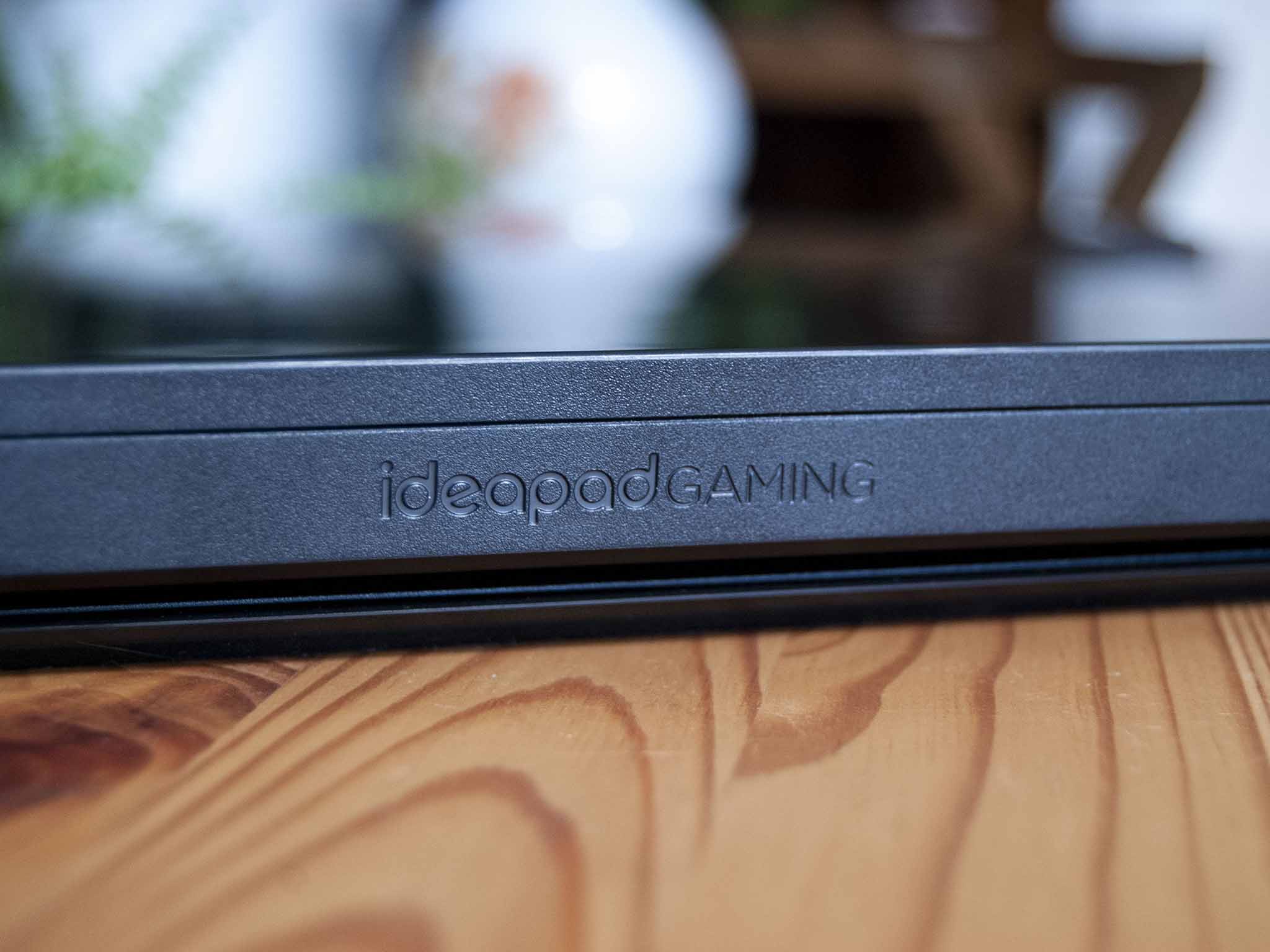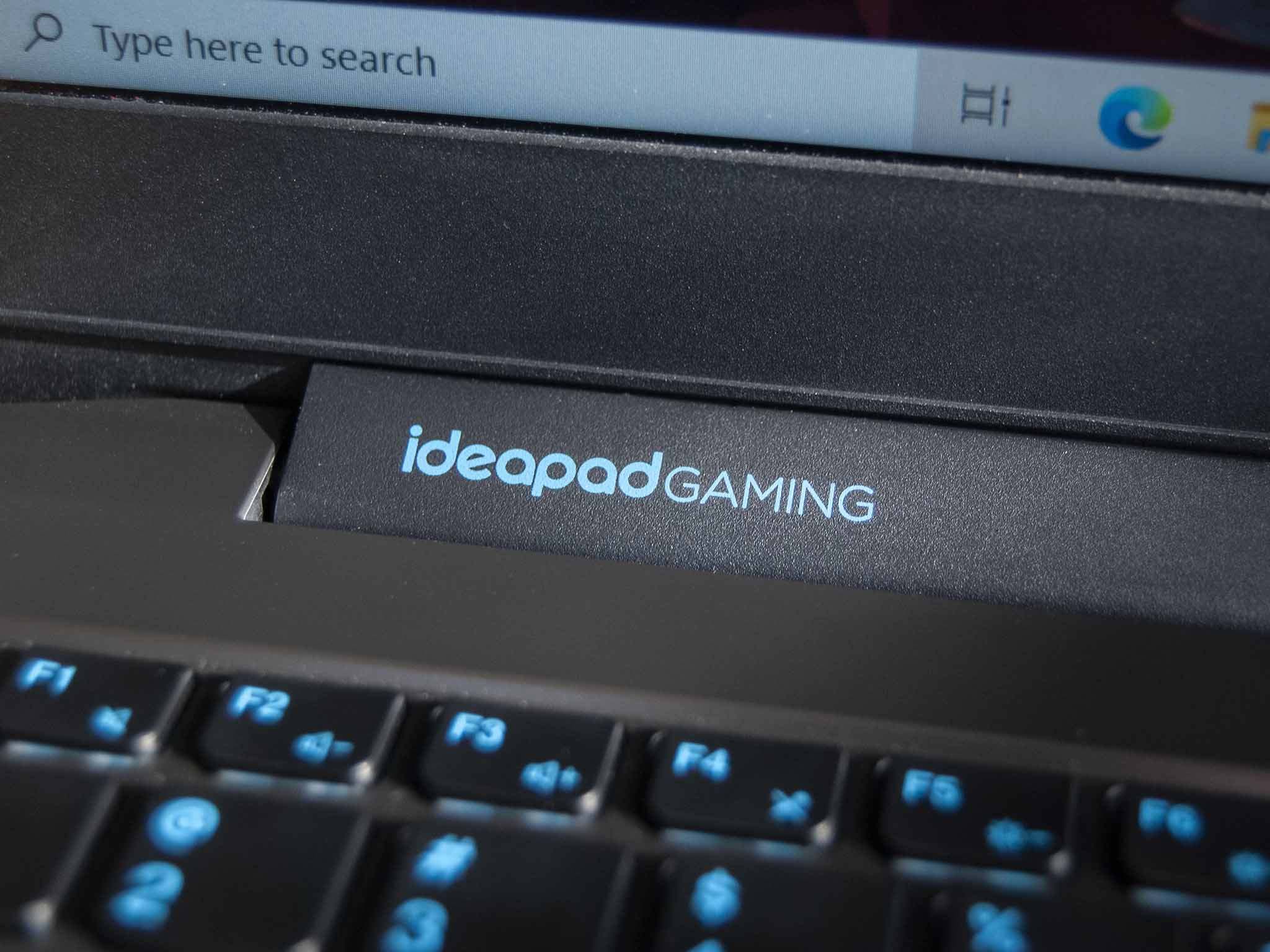Lenovo IdeaPad Gaming 3i 15 review: A gaming laptop that's also good for productivity work
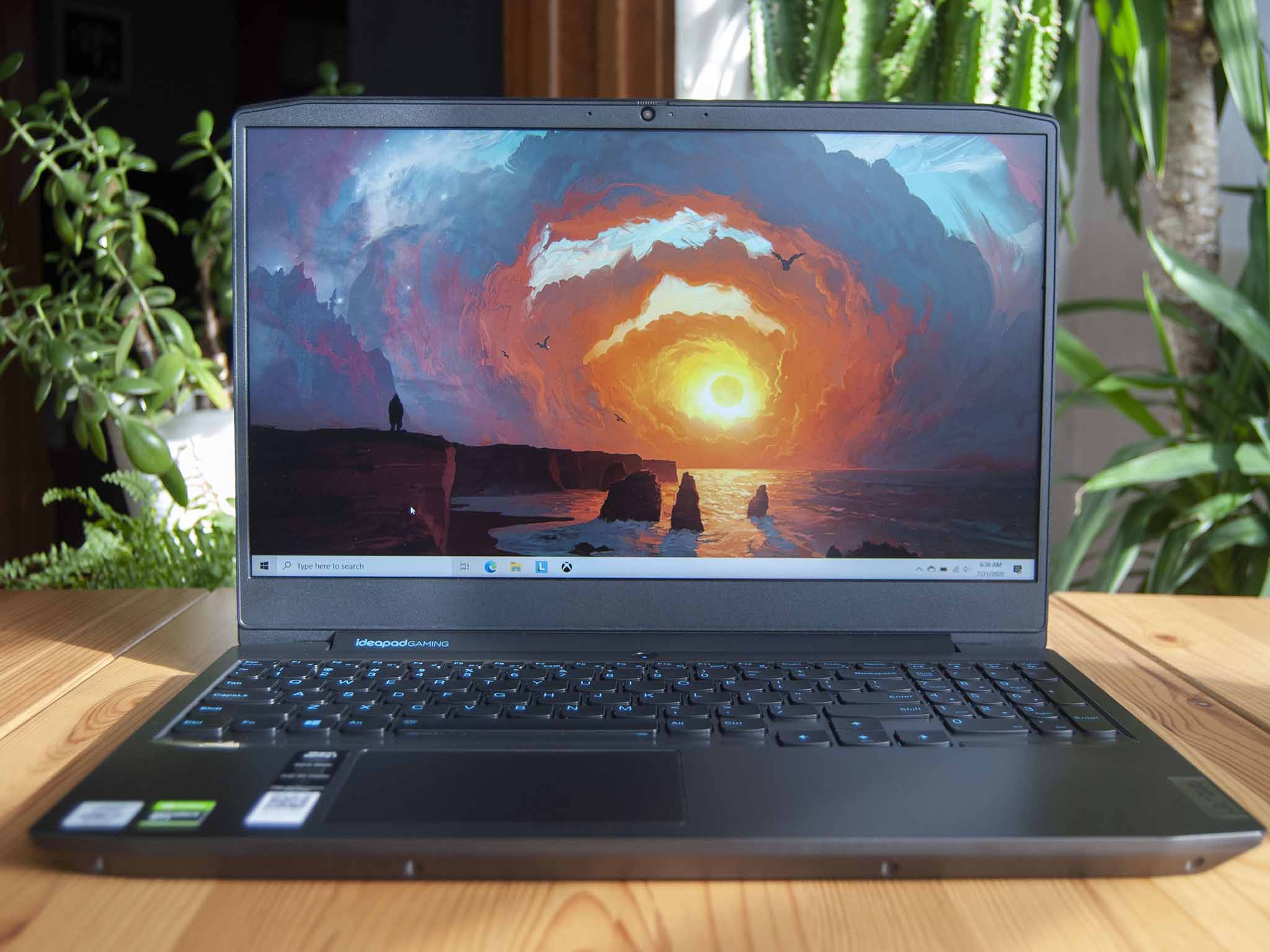
Lenovo's Legion 5(i) and Legion 7(i) laptops are mid-range and high-end gaming options packed with a ton of extra features and high-end hardware. They're completely focused on gaming, and those looking for a laptop that can split time between fun and work might feel left out, at least on the productivity side. Enter the IdeaPad Gaming series, a refreshed addition to Lenovo's arsenal. It's a more affordable laptop with better battery life, a comfortable keyboard, a sizable touchpad, and a dedicated graphics card. I've been using the 15.6-inch Gaming 3i for a week for gaming, and productivity needs to see exactly what it's all about and whether or not it's worth saving some money over the Legion brand.
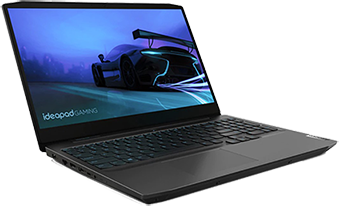
Bottom line: The IdeaPad Gaming 3i 15 is marketed as an affordable gaming laptop for low-impact titles, but it can easily double as a productivity machine during the day. Unfortunately, it suffers from a lacking display, and it could do with more powerful GPU options.
Pros
- Comfortable keyboard, large touchpad
- Webcam shutter
- Strong CPU
- Above-average battery life
Cons
- Core i7 CPU outpaces GPU options
- No rear port hub and just two USB-A
- Display is underwhelming
Specifications and pricing
IdeaPad Gaming 3i 15 at a glance
Windows Central received a review unit of the IdeaPad Gaming 3i 15 from Lenovo, packing a 10th Gen Intel Core i7-10750H processor (CPU), 8GB of dual-channel DDR4 RAM, a 512GB M.2 PCIe SSD, an NVIDIA GTX 1650 graphics card (GPU), and a 15.6-inch FHD display with a 120Hz refresh rate.
This refreshed lineup of gaming hardware was announced April 2020, and while it's currently the only option, there is an expected AMD variant coming soon. The IdeaPad Gaming 3i 15 replaces the IdeaPad L340 15 that featured up to an Intel Core i7-9750HF CPU and NVIDIA GTX 1050 (3GB) GPU.
This exact model costs about $990 at Lenovo. For a better deal, you can get a model with Core i5-10300H CPU, 16GB of RAM, 512GB SSD, and NVIDIA GTX 1650 Ti GPU for about $989 at Amazon. A truly budget option with Core i5 CPU, 8GB of RAM, 256GB SSD, and NVIDIA GTX 1650 GPU costs about $750 at Amazon.
Following are the exact specs found in this review unit.
| Category | Spec |
|---|---|
| OS | Windows 10 Home |
| Processor | 10th Gen Intel Core i7-10750H Six cores Up to 5.0GHz |
| RAM | 8GB DDR4-2933MHz Dual-channel available Upgradeable |
| Graphics | NVIDIA GTX 1650 4GB GDDR6 VRAM |
| Storage | 512GB M.2 PCIe SSD SK hynix Upgradeable |
| Display | 15.6 inches 1920x1080 (FHD) Anti-glare IPS 120Hz refresh rate |
| Ports | Two USB-A 3.1 (Gen 1) USB-C 3.1 HDMI 2.0 RJ45 Ethernet 3.5mm audio |
| Audio | Dual 1.5W speakers Down-firing Dolby Audio |
| Wireless | Intel Wi-Fi 6 AX201 802.11ax (2 x 2) Bluetooth 5.0 |
| Camera | Front-facing 720p |
| Keyboard | Single-zone blue backlight |
| Touchpad | Precision Buttonless |
| Security | Webcam shutter |
| Battery | 45Wh 135W AC adapter |
| Dimensions | 14.13 x 9.83 x 0.98 inches (359mm x 249.6mm x 24.9mm) |
| Weight | From 4.8 pounds (2.2kg) |
| Color | Chameleon Blue Onyx Black |
No rear ports
All the latest news, reviews, and guides for Windows and Xbox diehards.
IdeaPad Gaming 3i 15 design and features
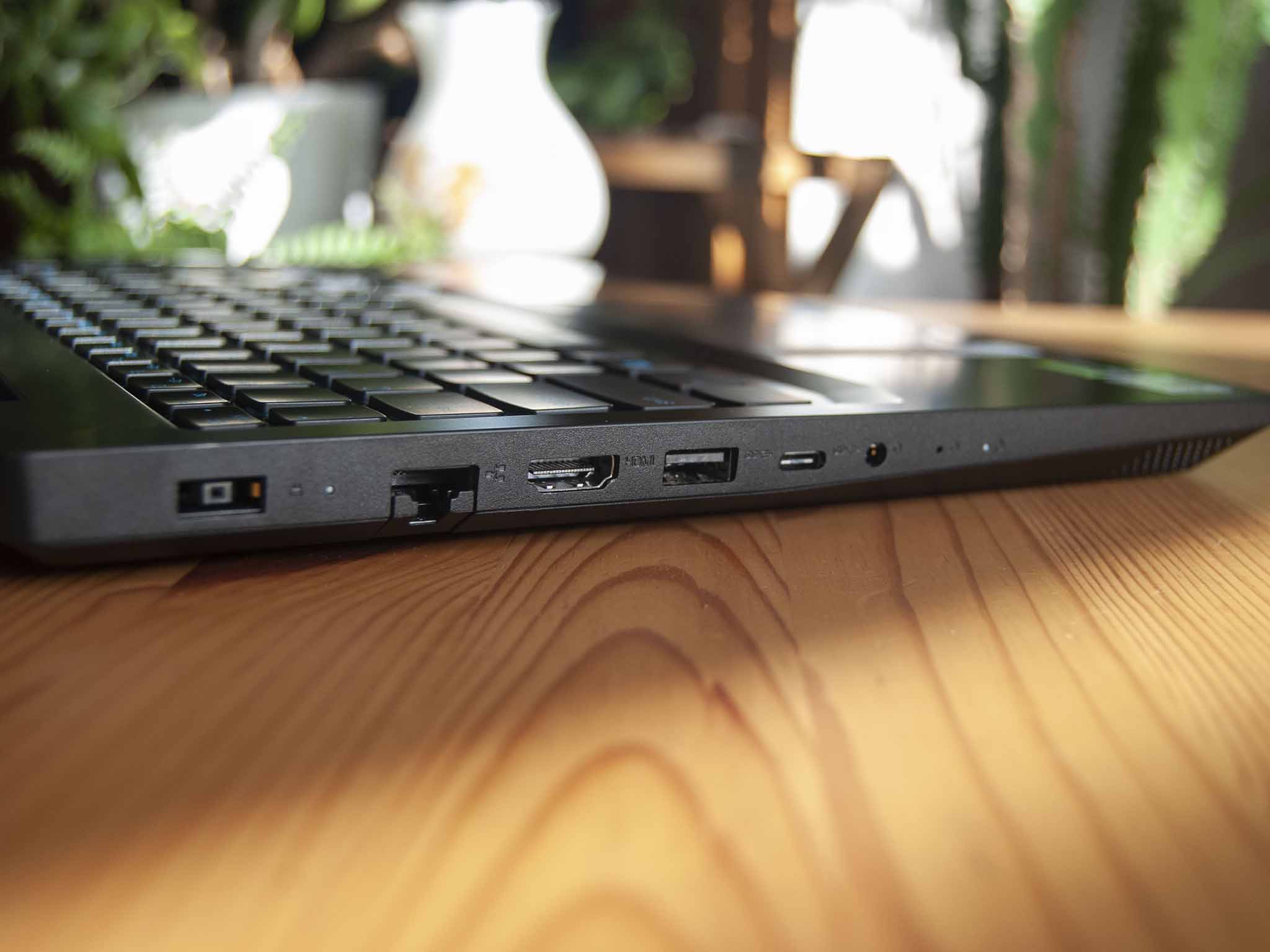

The IdeaPad Gaming 3i 15 has a PC and ABS plastic chassis that's sized to what most expect from a standard gaming laptop. It weighs in at just less than five pounds and measures about an inch thick, not notably large or notably small. It has a hard shell with minimal flex, though there is quite a bit of movement in the lid and display. Not alarming, exactly, but it is there. A single wide hinge runs along the center of the laptop, stamped with the IdeaPad Gaming logo in blue to match the keyboard's backlight. The chassis is cut with some offset angles to give it a bit of extra style.
Unlike the Legion series, there's no rear port hub on the IdeaPad Gaming 3i. All ports are positioned in a more traditional layout along the sides. In terms of cable management, it's definitely not as clean as the Legion laptops, and there's not as much space for as many ports. Here you get two USB-A 3.1 (Gen 1), one USB-C 3.1, HDMI 2.0, RJ45 Ethernet (drop-jaw), and 3.5mm audio. No SD or microSD card readers and no Thunderbolt 3; it would be nice to have a couple of extra USB-A. Once you plug in a gaming mouse you're down to just one USB without resorting to a docking station. I get that Lenovo is trying to distance the IdeaPad series from the Legion series, but the rear port hub is a far more elegant solution.
Down-firing 1.5W speakers are located on the front edges of the laptop. They do a decent job for music and voice, but for gaming, you'll soon want to pick up something from our best PC gaming headset list. There's not a whole lot of bass, and when the fans get going under load, they will interfere with audio even when speakers are at maximum volume. No surprises here for a laptop this price.
As for the 720p front-facing camera located above the display, Lenovo has added a privacy shutter as a welcome addition. The camera itself, like the speakers, is average for the price. Color seems true, and while there is some blur, it will do a decent job for video conferencing while you're hard at work. If you have streaming ambitions, however, a third-party webcam will no doubt be in order.
For a bit of future-proofing and to provide gamers with faster, more reliable wireless internet, there is Wi-Fi 6 in the form of an Intel AX201 chip. Also included is Bluetooth 5.0 for connecting wireless accessories when ports run out.
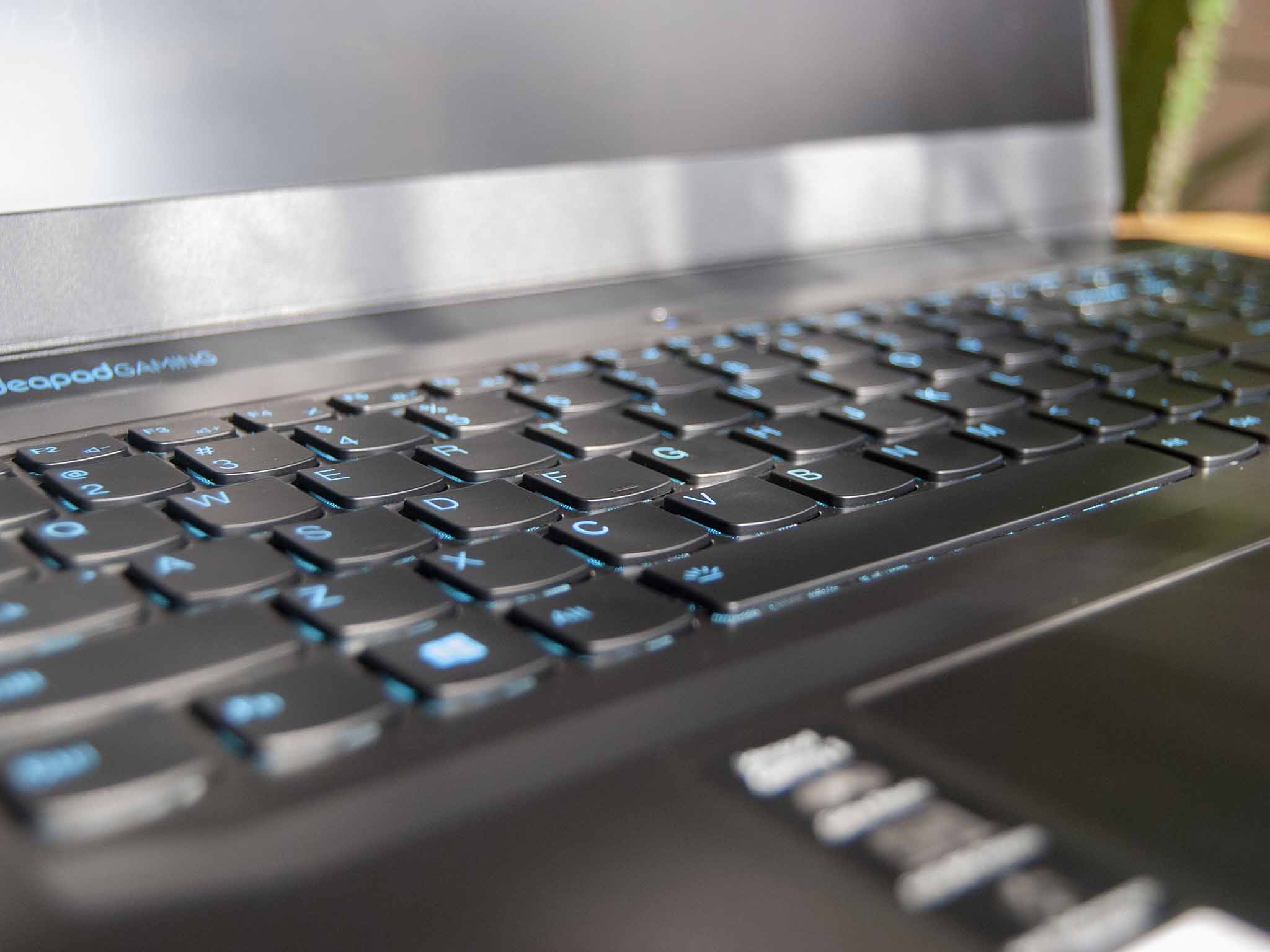
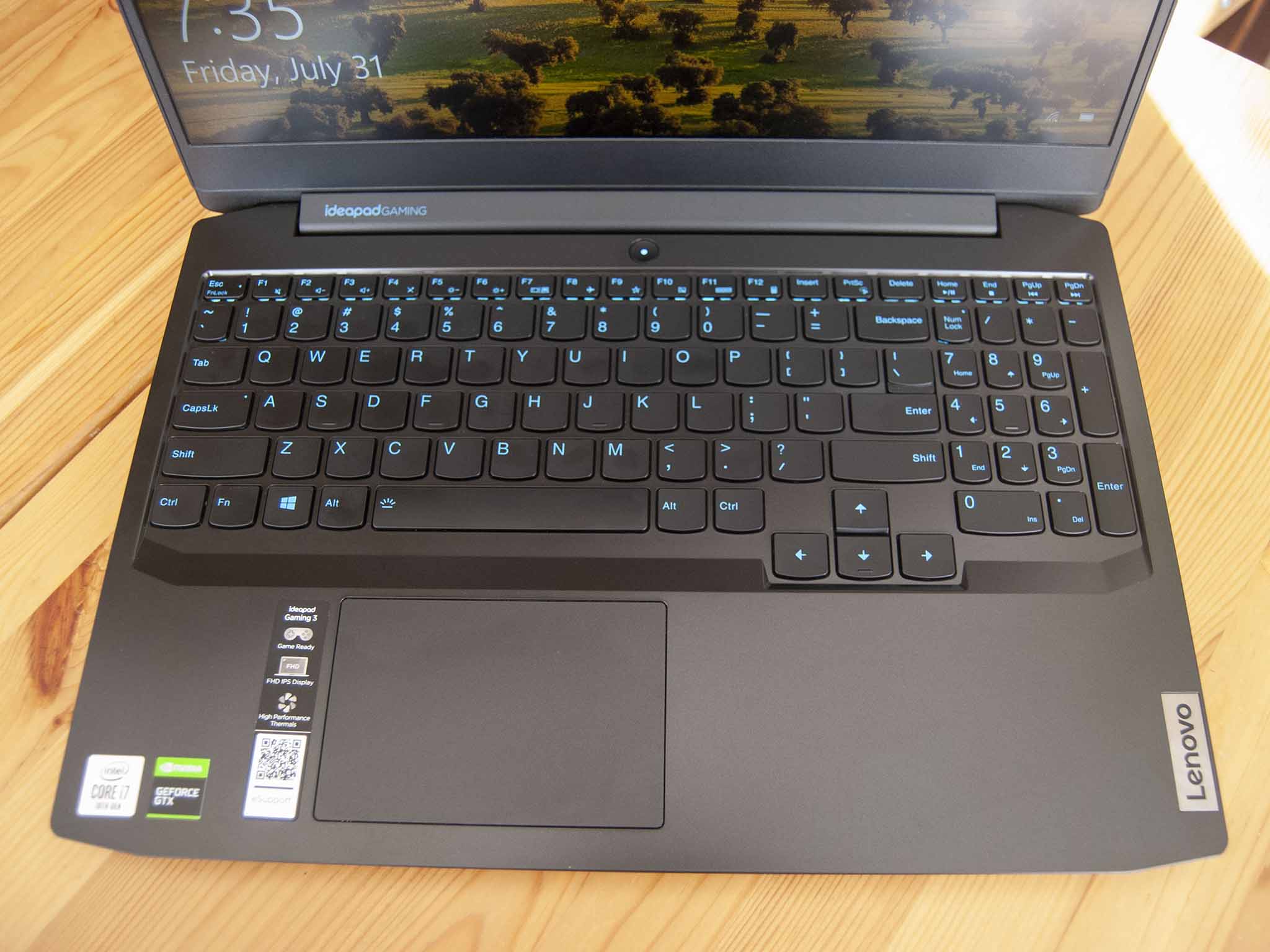
The IdeaPad Gaming 3i doesn't benefit from the same TrueStrike hardware with anti-ghosting and four-zone RGB backlight, but its keyboard is still comfortable. I used it for a few hours to type up some work, noting deep travel and smooth presses. A single-zone blue backlight comes standard. If you plan on working by day from this laptop, you should have no problem here.
A number pad is included, and it offsets the rest of the keyboard and sizable Precision touchpad. Your palm will be on the touchpad when using the WASD keys, but there's a dedicated Fn shortcut to quickly kill the touchpad. Overall it's a good setup for both gaming and productivity.
Lackluster
IdeaPad Gaming 3i 15 display
I bemoaned the lack of a QHD display option and lack of just a bit more brightness in my Legion 5i 15 review. Compared to the IdeaPad Gaming 3i's display, it seems like a high-end option.
The Gaming 3i's IPS screen has a 120Hz refresh rate that makes sense for the GPU options, but the rest of the specs aren't particularly impressive. Response time, though I couldn't measure directly, leaves a lot to be desired. In fast-paced games, ghosting is sometimes noticeable. There's also no G-Sync tech to pair up with the NVIDIA GPU.
Color reproduction is really where the display drops off, showing just 64% sRGB, 48% AdobeRGB, and 48% DCI-P3 when measured with a SpyderX Pro colorimeter. Contrast is decent so the display doesn't look washed out, but the color just won't look the same as something with higher percentages.
The display has a matte (anti-glare) finish on it to help with gaming in a well-lit space, but brightness gets up to just 306 nits. In most cases, that's enough to still see the screen, but don't expect to play outdoors or in a sun-filled room if the game is particularly dark.
Some CPU throttling
IdeaPad Gaming 3i 15 gaming
Like the Legion series, the IdeaPad Gaming 3i features Lenovo's "Q Control" function that allows gamers to quickly swap between "Balance," "Quiet," and "Performance" modes. The LED on the power button doesn't change to show the mode like on the Legion, but you do get an on-screen notification when the switch is made. I ran some stress tests using AIDA64 to see how well the laptop manages heat across these power modes. The laptop was plugged in and charging, creating extra heat, while I performed these tests.
The Gaming 3i's power balancing allows the CPU and GPU to run together without throttling.
Starting with Lenovo's Balance mode, I stress tested the CPU without the GPU. The CPU hits about 55W power draw, with core temperatures hitting up to 90 degrees Celsius and leveling off around 85 degrees. The clock speeds sit at about 3.6GHz, and there is between 0% and 2% thermal throttling. Fans are full tilt at this point; if you're not using a headset, now's the time to put one on. The cooling layout is different from the Legion, with just two heat pipes and one relatively small exhaust vent.
Testing the CPU and GPU together, the CPU has about a 32W power draw and a clock speed around 2.0GHz. Temperatures level off at about 75 degrees Celsius for the CPU and 70 degrees for the GPU. There's absolutely no thermal throttling with both CPU and GPU at full load, but keep in mind the CPU is running at less power and less speed. Lenovo's "Dual Burn" feature — which allows hardware to run together without overheating — isn't advertised with the Gaming 3i, but it's clear that it's in effect.
Switching to Lenovo's Performance mode, I tested the CPU and GPU together again. The CPU's power draw went up to 39W, and the clock speed averaged out to about 2.5GHz, with temperatures staying the same. No thermal throttling again but slightly faster CPU clock speed.
Running the CPU alone does seem to push the dual-fan cooling system to its limits, and if you jump into a task that requires full CPU load, the Gaming 3i might take a bit too long for its cooling to catch up. Jumping into a stress test cold saw a lot of thermal throttling for a couple of minutes until the fans hit maximum speed. If you're gaming, though, the reduced CPU power and speed helps keep things balanced at the cost of performance.
I ran some synthetic benchmarks to see how the IdeaPad Gaming 3i 15 stacks up against other laptops we've recently reviewed.
3DMark
Time Spy
| Device | GPU | Score |
|---|---|---|
| Lenovo IdeaPad Gaming 3i 15 | GTX 1650 | 3,689 |
| Lenovo Legion 5i 15 | RTX 2060 | 5,835 |
| ASUS ROG ZEPHYRUS G14 | RTX 2060 Max-Q | 6,224 |
| HP ENVY 32 AIO | RTX 2060 Max-Q | 5,664 |
| Lenovo ThinkPad X1 Extreme (Gen 2) | GTX 1650 Max-Q | 3,190 |
| Razer Blade 15 | RTX 2070 Max-Q | 6,325 |
| Lenovo ThinkPad P53 | Quadro RTX 5000 | 6,760 |
| Lenovo Legion Y740 15 | RTX 2070 Max-Q | 6,406 |
| Lenovo Legion Y740 17 | RTX 2080 Max-Q | 7,128 |
Running the same benchmark with the Lenovo Performance mode enabled saw a result of 3,706, so not a big change there.
3DMark
Fire Strike
| Device | GPU | Score |
|---|---|---|
| Lenovo IdeaPad Gaming 3i 15 | GTX 1650 | 8,642 |
| Lenovo Legion 5i 15 | RTX 2060 | 14,371 |
| ASUS ROG ZEPHYRUS G14 | RTX 2060 Max-Q | 14,709 |
| HP ENVY 32 AIO | RTX 2060 Max-Q | 13,163 |
| Lenovo ThinkPad X1 Extreme (Gen 2) | GTX 1650 Max-Q | 7,198 |
| Razer Blade 15 | RTX 2070 Max-Q | 14,944 |
| Dell XPS 15 (7590) | GTX 1650 Max-Q | 7,763 |
| Lenovo ThinkPad P53 | Quadro RTX 5000 | 16,367 |
| Lenovo Legion Y740 15 | RTX 2070 Max-Q | 14,669 |
| Lenovo Legion Y740 17 | RTX 2080 Max-Q | 16,303 |
With Lenovo's Performance mode enabled, the IdeaPad Gaming 3i managed a score of 8,637. No real change from Balance mode.
Cinebench
Cinebench (R20) (Higher is better)
| Device | CPU | Range |
|---|---|---|
| Lenovo IdeaPad Gaming 3i 15 | Core i7-10750H | 2,771 to 2,818 |
| Lenovo Legion 5i 15 | Core i7-10750H | 2,736 to 2,826 |
| ASUS ROG ZEPHYRUS G14 | Ryzen 4900HS | 4,197 to 4,390 |
| Dell XPS 15 (7590) | Core i9-9980HK | 3,174 to 3,283 |
| HP ENVY 32 AIO | Core i7-9700 | 2,906 to 3,073 |
| Lenovo ThinkPad X1 Extreme (Gen 2) | Core i7-9850H | 1,730 to 2,495 |
| Dynabook Portégé X30-F | Core i7-8665U | 1,242 to 1,313 |
| Lenovo ThinkPad P53 | Xeon E-2276M | 2,686 to 2,701 |
| Surface Laptop 3 13.5 | Core i5-1035G4 | 1,584 to 1,606 |
| Surface Laptop 3 15 | Core i7-1065G7 | 1,703 to 1,745 |
Running Cinebench multiple times in a row can show whether or not a laptop's CPU is going to suffer from thermal throttling. Not much of a performance dip at all for multiple runs.
Lenovo mentions the Xbox Game Pass for PC on the Gaming 3i's product page, and indeed this is a great laptop for playing indie titles that don't require a ton of raw performance. Along with a couple of select titles from Game Pass, I tested to see how well the GTX 1650 could handle heavy games like Red Dead Redemption 2 and Call of Duty: Warzone.
Starting with Red Dead Redemption 2 set to Low in-game settings, the Gaming 3i averaged 62 frames-per-second (FPS) over the course of about ten minutes. The game doesn't look great at this graphics setting, but it's certainly playable at 1080p.
Next, I jumped into a Warzone match and played through to my death. The Gaming 3i averaged 52 FPS with Low in-game settings. Again, it's completely playable here, though if you value graphical fidelity, you're no doubt going to be let down.
The IdeaPad Gaming 3i will easily handle indie and esports games.
Counter-Strike: Global Offensive is a popular esports title that runs well on a lot of laptops. The Gaming 3i averaged 91 FPS with High in-game settings. Turning some settings down should allow you to hit the 120 FPS level perfect for the 120Hz display.
I also checked out the hot new game Grounded available on Game Pass for PC. The laptop averaged 62 FPS with High in-game settings. Turning settings down a bit will keep the game looking good and will boost FPS.
And finally, I played some Neon Abyss, also available on Game Pass for PC, averaging 232 FPS with default in-game settings. Great performance for indie titles like this.
The takeaway here is that the NVIDIA GTX 1650 is much better cut out for low-impact gaming. Sure, it will handle games like Red Dead Redemption 2, but with graphics, settings turned way down. The Core i7 six-core CPU is a relative powerhouse, but paired with the GTX 1650; there's bound to be a mismatch. Even with the GTX 1650 Ti, the Core i7 is probably slightly overkill. Lenovo adding the option for an RTX 2060 or a GTX 1660 Ti would bring a better balance for those who prefer the Core i7 CPU.
The good news? You can opt for the more affordable Core i5-10300H CPU and either the GTX 1650 or 1650 Ti and still experience smooth 1080p gaming for indie and esports titles. A model with Core i5 CPU, 8GB of RAM, 256GB SSD, and GTX 1650 GPU can be had for about $750.
Upgradeable RAM and SSD
IdeaPad Gaming 3i 15 performance and battery
The 45Wh battery in the Gaming 3i is relatively small, but the GPUs on offer don't pull as much power as the high-end RTX cards that make up our list of the best graphics cards. In PCMark 10's Gaming rundown test, the battery lasted one hour and five minutes with display brightness at about 80%. That doesn't seem like much (and it's not), but keep in mind the Legion 5i 15 managed just 46 minutes with display brightness at 50%.
Fast charge is available, and you can expect most of a charge in only about 45 minutes. Using it for an indie title like Neon Abyss, the battery lasted closer to about two hours before asking for the 135W AC adapter.
I tested again with PCMark 10's Modern Office rundown, and the battery lasted four hours and 49 minutes. If you need to split time on this laptop between gaming and productivity, it should fare well compared to a lot of other gaming hardware.
Following are more standard benchmarks to measure how the IdeaPad Gaming 3i stacks up against other laptops we've reviewed.
Geekbench 5
Geekbench 5.0 (CPU) (Higher is better)
| Device | CPU | Single core | Multi core |
|---|---|---|---|
| Lenovo IdeaPad Gaming 3i 15 | i7-10750H | 1,271 | 5,172 |
| Lenovo Legion 5i 15 | i7-10750H | 1,226 | 5,993 |
| ASUS ROG Zephyrus G14 | Ryzen 9 4900HS | 1,221 | 7,982 |
| Acer Spin 3 (SP314-54N) | i5-1035G1 | 1,185 | 3,524 |
| HP ENVY x360 | Ryzen 5 4500U | 1,100 | 4,564 |
| Acer Swift 3 | Ryzen 7 4700U | 1,131 | 4,860 |
| Lenovo IdeaPad Flex 5 14 | Ryzen 5 4500U | 1,087 | 4,570 |
| Surface Laptop 3 15 | Ryzen 5 3580U | 769 | 2,720 |
| Lenovo ThinkPad L13 Yoga | i5-10210U | 1,069 | 3,754 |
| Lenovo Yoga C640 | i3-10110U | 1,015 | 2,111 |
| Lenovo Yoga C740 14 | i5-10210U | 1,094 | 3,767 |
| Samsung Galaxy Book Flex | i7-1065G7 | 1,317 | 4,780 |
| Dell XPS 13 (9300) | i7-1065G7 | 1,284 | 4,848 |
| Surface Laptop 3 15 | i7-1065G7 | 1,336 | 4,893 |
| HP Elite Dragonfly | i7-8665U | 1,125 | 2,942 |
| Surface Laptop 3 13.5 | i5-1035G7 | 1,177 | 4,413 |
| HP Spectre x360 13 | i7-1065G7 | 1,006 | 3,402 |
| Surface Pro X | SQ1 | 725 | 2,819 |
| Galaxy Book S | SD 8cx | 685 | 2,681 |
A considerably lower multi-core score here compared to the Legion 5i 15 with the same CPU.
PCMark
PCMark 10
| Device | Score |
|---|---|
| Lenovo IdeaPad Gaming 3i 15 | 4,757 |
| Lenovo Legion 5i 15 | 5,118 |
| ASUS ROG Zephyrus G14 | 5,707 |
| Acer Spin 3 (SP314-54N) | 3,674 |
| HP ENVY x360 | 4,755 |
| Acer Swift 3 | 4,861 |
| Lenovo IdeaPad Flex 5 14 | 4,759 |
| Surface Laptop 3 15 (AMD) | 4,006 |
| Lenovo IdeaPad Flex 14 | 3,202 |
| Surface Book 3 15 | 4,393 |
| Lenovo ThinkPad L13 Yoga | 4,899 |
| Lenovo Yoga C640 | 4,008 |
| Lenovo Yoga C740 | 4,941 |
| Samsung Galaxy Book Flex | 3,924 |
| Dell XPS 13 (9300) | 4,524 |
| Surface Laptop 3 15 (Intel) | 4,604 |
| Dell XPS 13 2-in-1 | 4,554 |
| HP Spectre x360 13 | 4,261 |
| HP Elite Dragonfly | 3,716 |
| LG gram 17 | 4,157 |
| Surface Pro 7 (i5) | 3,992 |
A good score here on a test of how well the laptop's hardware works together to accomplish productivity tasks. The Core i7-10750H is a strong CPU.
SSD
CrystalDiskMark (Higher is better)
| Device | Read | Write |
|---|---|---|
| Lenovo IdeaPad Gaming 3i 15 | 2,170.35 MB/s | 1,082.21 MB/s |
| Lenovo Legion 5i 15 | 3,308 MB/s | 2,960 MB/s |
| ASUS ROG Zephyrus G14 | 1,907 MB/s | 1,751 MB/s |
| Acer Spin 3 (SP314-54N) | 1,630 MB/s | 885 MB/s |
| HP ENVY x360 | 1,530 MB/s | 864 MB/s |
| Acer Swift 3 | 2,161.99 MB/s | 1,214.84 MB/s |
| Lenovo IdeaPad Flex 5 14 | 2,199.10 MB/s | 1,017.07 MB/s |
| Lenovo IdeaPad Flex 14 | 3,405 MB/s | 1,512 MB/s |
| Lenovo ThinkPad L13 Yoga | 3,188.82 MB/s | 1,685.61 MB/s |
| Lenovo Yoga C640 | 1,906.78 MB/s | 970.69 MB/s |
| Samsung Galaxy Book Flex | 3,376 MB/s | 2,983 MB/s |
| Dell XPS 13 (9300) | 3,000 MB/s | 1,217 MB/s |
| HP Spectre x360 (Optane) | 2,092 MB/s | 515 MB/s |
| Dell XPS 13 2-in-1 | 2,400 MB/s | 1,228 MB/s |
| HP Elite Dragonfly (Optane) | 2,124 MB/s | 548 MB/s |
| Lenovo Yoga C740 | 3,408 MB/s | 2,982 MB/s |
| LG gram 17 (2020) | 3,477 MB/s | 2,900 MB/s |
| Surface Laptop 3 15 | 2,028 MB/s | 806 MB/s |
| Surface Laptop 3 13.5 | 2,338 MB/s | 1,583 MB/s |
| Acer Swift 5 (SF514-54T) | 1,641 MB/s | 1,025 MB/s |
| Lenovo ThinkPad X1 Extreme (Gen 2) | 3,416 MB/s | 3,016 MB/s |
The SK hynix SSD puts up decent speeds here, though it's not going to match the performance in more premium laptops. There are two M.2 slots, but you'll need to choose between a second M.2 PCIe SSD and a 2.5-inch SATA SSD as they occupy the same space.
Tough market
IdeaPad Gaming 3i 15 compared to the competition
Lenovo's Legion 5i 15 that we recently reviewed immediately comes to mind as an alternative with a heavier focus on gaming, but only if you're willing to spend more than $1,000. It's a higher-end laptop with some extra features, including four-zone RGB backlight for its TrueStrike keyboard, and rear port hub. A model with 120Hz FHD display, Core i7-10750H CPU, 8GB of RAM, 512GB SSD, and NVIDIA GTX 1660 Ti can be had for about $1,100.
If you like the extra features that come with the Legion but prefer AMD, a Legion 5 model with Ryzen 5 4600H CPU, 8GB of RAM, 512GB SSD with 1TB HDD, NVIDIA GTX 1650 GPU, and a 120Hz FHD display costs about $810 from Lenovo with a coupon automatically applied.
Moving away from Lenovo, the ASUS TUF Gaming A15 is a durable laptop with impressive specs available at a great price. For about $1,000, a model with AMD Ryzen 7 4800H CPU, 8GB of RAM, 512GB SSD, NVIDIA RTX 2060 GPU, and 15.6-inch FHD display with 60Hz refresh rate can be had.
If you're partial to Dell, the G3 15 Gaming comes with an Intel Core i5-10300H CPU, 8GB of RAM, 256GB SSD, 15.6-inch FHD display with 60Hz refresh rate, and NVIDIA GTX 1650 Ti GPU, all for about $735.
Finally, HP is not to be outdone with its OMEN 15 gaming lineup. A model with Core i5-10300H CPU, 8GB of RAM, 256GB SSD, NVIDIA GTX 1650 GPU, and 15.6-inch FHD display costs about $900.
Should you buy the IdeaPad Gaming 3i 15?
Who it's for
- Those who prefer indie and esports titles
- Those who frequently use an external gaming monitor
- Those who want to spend less than $1,000
- Those who split time between gaming and productivity work
Who it isn't for
- Those who want a high-end gaming experience
- Those who want customizable RGB
- Those who have more than $1,000 to spend
The IdeaPad Gaming 3i 15 is a more affordable alternative to the Legion gaming series from Lenovo, but it doesn't have as many gamer-oriented features. No rear port hub, no customizable RGB, no TrueStrike keyboard, and no display options above 120Hz with good color reproduction. However, it does have a much better battery life, it offers a comfortable typing experience, and its hardware is more than cut out for productivity work. Ultimately this should be an attractive laptop for those who don't want to go all-in with gaming and who don't mind a lackluster display.
In-game testing reveals that the NVIDIA GTX 1650 GPU will hold up well with indie and esports titles, and will run heavy AAA games though with graphics settings turned way down. The fans get loud, but the CPU and GPU can run together without thermal throttling. If you're concerned with running games with settings cranked up, you'll likely want to have a look at our collection of the best Windows laptops.

Cale Hunt brings to Windows Central more than nine years of experience writing about laptops, PCs, accessories, games, and beyond. If it runs Windows or in some way complements the hardware, there’s a good chance he knows about it, has written about it, or is already busy testing it.

